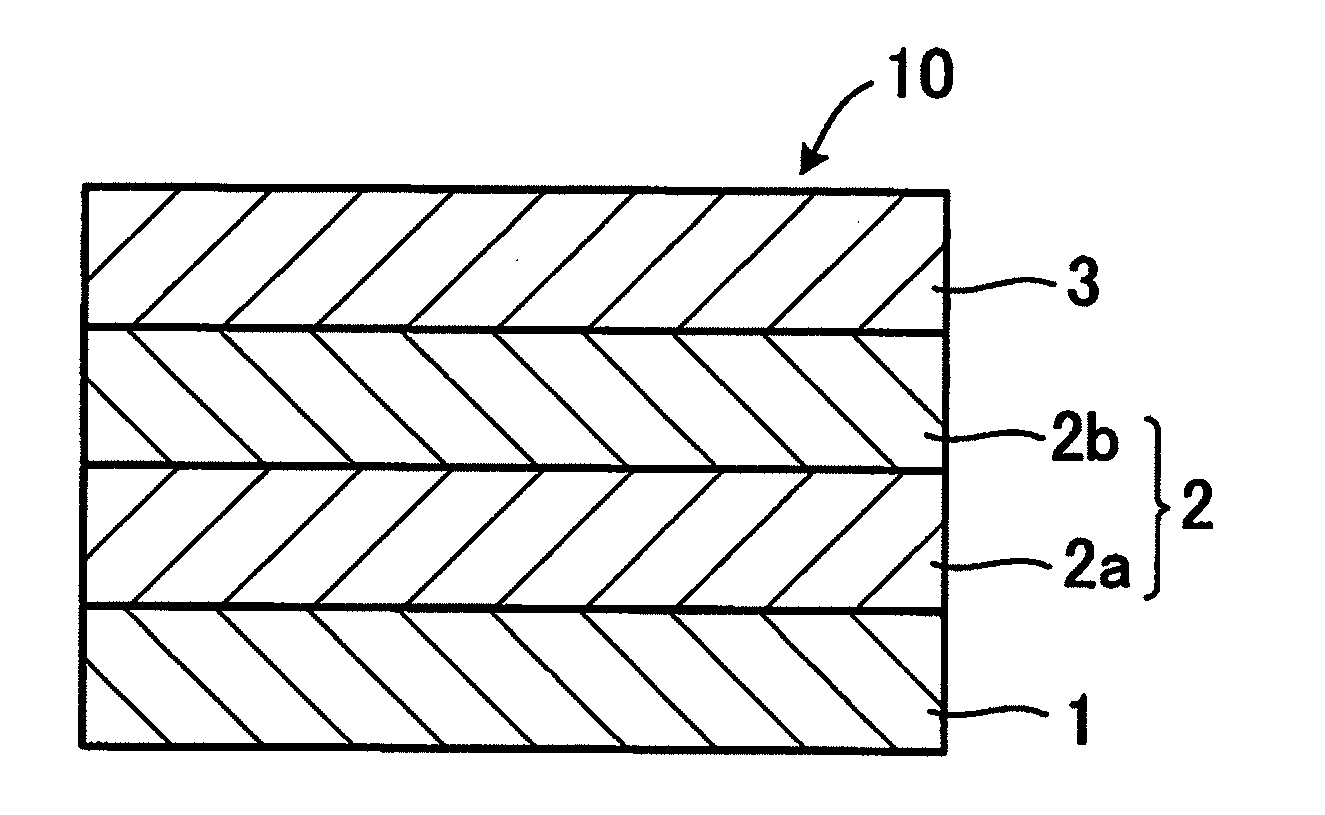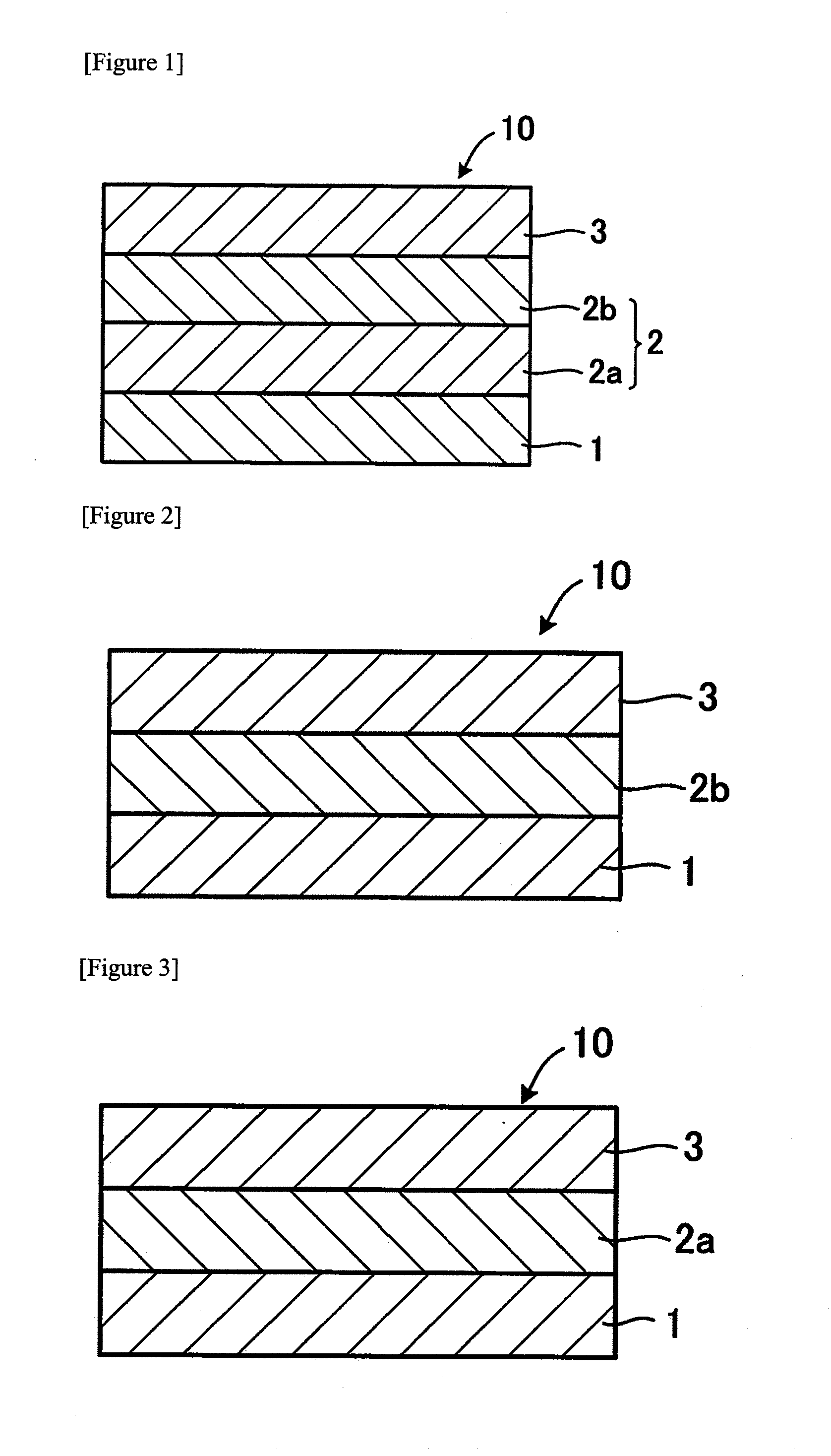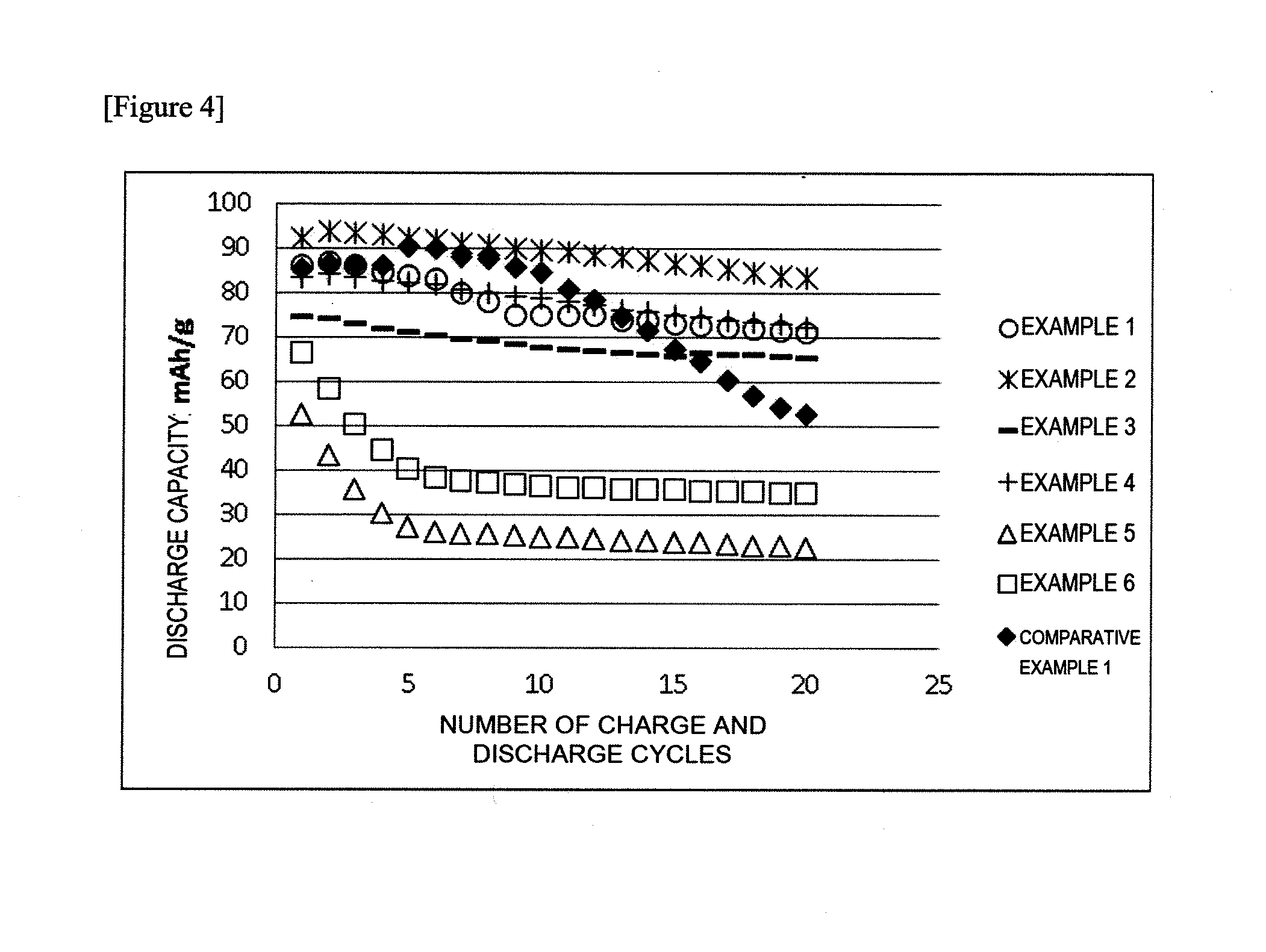Solid-state battery
a solid-state battery and battery technology, applied in batteries, non-aqueous electrolyte cells, cell components, etc., can solve the problems of high energy density, high energy density, and high processing requirements of smartphones, and achieve excellent stability and high ion conductivity.
- Summary
- Abstract
- Description
- Claims
- Application Information
AI Technical Summary
Benefits of technology
Problems solved by technology
Method used
Image
Examples
first embodiment
[0060]FIG. 1 is a sectional view of the solid-state battery according to the first embodiment of the present invention.
[0061]A solid-state battery 10 is, for example, a solid-state lithium ion secondary battery, and can be used in various devices including mobile phones, personal computers, automobiles, and the like. The solid-state battery 10 has a structure in which a solid electrolyte layer 2 is disposed between a positive-electrode layer 1 and a negative-electrode layer 3. In the first embodiment, the solid electrolyte layer 2 includes a first solid electrolyte layer 2a on the positive-electrode layer 1 side containing a sulfide solid electrolyte and a second solid electrolyte layer 2b on the negative-electrode layer 3 side containing a complex hydride solid electrolyte, which are in contact with each other.
[0062]Hereinafter, each member will be described in detail.
1. Solid-Electrolyte Layer
[0063]The solid electrolyte layer 2 is a lithium-ion-conducting layer disposed between th...
second embodiment
[0098]FIG. 2 is a sectional view of a solid-state battery according to a second embodiment of the present invention.
[0099]The solid-state battery 10 according to the second embodiment has a structure in which the second solid electrolyte layer 2b containing a complex hydride solid electrolyte is disposed between the positive-electrode layer 1 and the negative-electrode layer 3. That is, the solid-state battery 10 according to the second embodiment does not include the first solid electrolyte layer 2a in the first embodiment. In the second embodiment, the positive-electrode layer 1 contains at least a positive-electrode active material and a sulfide solid electrolyte. The positive-electrode active material and the sulfide solid electrolyte contained in the positive-electrode layer 1 are as described in the first embodiment. The second solid electrolyte layer 2b and the negative-electrode layer 3 are also as described in the first embodiment.
[0100]The second embodiment also has a stru...
third embodiment
[0102]FIG. 3 is a sectional view of a solid-state battery according to the third embodiment of the present invention.
[0103]The solid-state battery 10 according to the third embodiment has a structure in which the first solid electrolyte layer 2a containing a sulfide solid electrolyte is disposed between the positive-electrode layer 1 and the negative-electrode layer 3. That is, the solid-state battery 10 according to the third embodiment does not include the second solid electrolyte layer 2b in the first embodiment. In the third embodiment, the negative-electrode layer 3 contains at least a negative-electrode active material and a complex hydride solid electrolyte. The negative-electrode active material and the complex hydride solid electrolyte contained in the negative-electrode layer 3 are as described in the first embodiment. The first solid electrolyte layer 2a and the positive-electrode layer 1 are also as described in the first embodiment.
[0104]The third embodiment also has a ...
PUM
| Property | Measurement | Unit |
|---|---|---|
| temperature | aaaaa | aaaaa |
| electrode potential | aaaaa | aaaaa |
| electric conduction | aaaaa | aaaaa |
Abstract
Description
Claims
Application Information
 Login to View More
Login to View More - Generate Ideas
- Intellectual Property
- Life Sciences
- Materials
- Tech Scout
- Unparalleled Data Quality
- Higher Quality Content
- 60% Fewer Hallucinations
Browse by: Latest US Patents, China's latest patents, Technical Efficacy Thesaurus, Application Domain, Technology Topic, Popular Technical Reports.
© 2025 PatSnap. All rights reserved.Legal|Privacy policy|Modern Slavery Act Transparency Statement|Sitemap|About US| Contact US: help@patsnap.com



